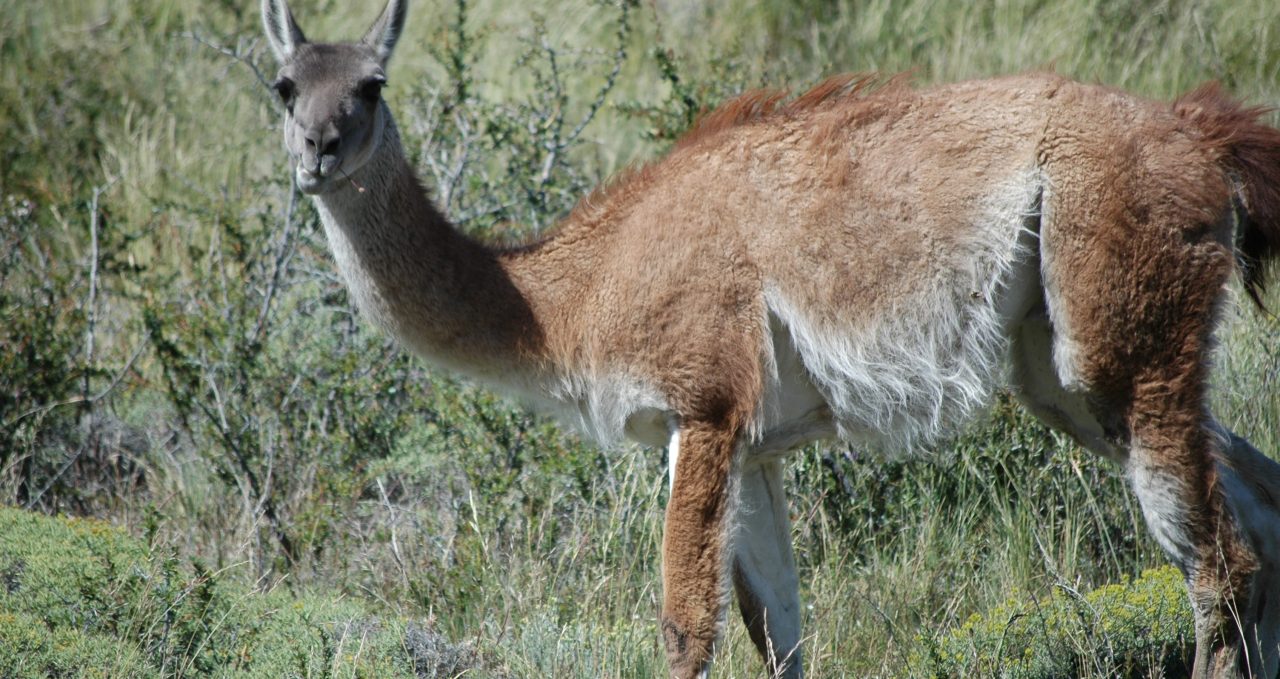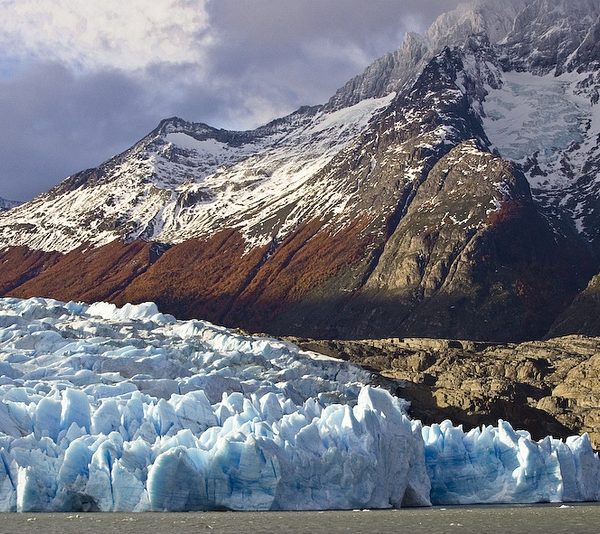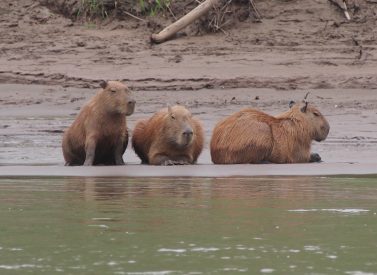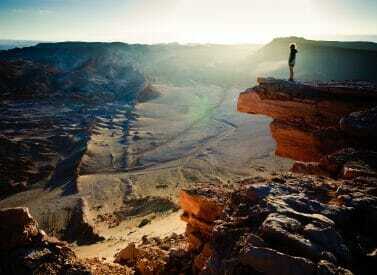
Patagonia Photography Tour
Take spectacular photographs of scenery, flora and wildlife on this photo tour.
These guided photography tours combine expert guiding in the wild and wonderful Torres del Paine National Park with the home comforts of the famous Eco-camp.
This Patagonian photography and wildlife adventure is an exploration into Torres del Paine National Park.
It is led by professional photographer and wildlife expert Diego Araya, supported by a special team of fauna trackers.
More on Patagonia photo tours
Discover and photograph the park’s geology, spectacular sunrises and sunsets and native flora and fauna.
With luck, we may spot and photograph the elusive puma, one of the world’s most enigmatic felines.
By night, you relax at the award-winning Eco Camp Patagonia.
The Eco Camp features luxury tented igloo-type domes.
These minimise environmental impact while providing a comfortable setting in nature, with hot water showers, electricity and plenty of delicious food.
Trip Highlights
Print Share Download as PDF-
Patagonia photography tour.
-
Track and photograph the elusive Puma, plus fox, ñandú & guanaco sightings.
-
Professional wildlife experts.
-
Limited groups of up to 5 people for optimum personalisation.
-
Stunning natural surroundings, plus five nights in Eco-Camp suite domes.
The week in Torres Del Paine was incredible – I think honestly one of the most beautiful places I’ve ever been to.
J. Poston, Paine.
Full Itinerary
Day 1: Travel from Punta Arenas or El Calafate,, Puerto Natales or Calafate to Torres del Paine National Park (L,D)
The trip begins with you being picked up from your hotel in Punta Arenas or Punta Arenas airport in the morning and driven to Eco-Camp Patagonia, located in the world-famous Torres del Paine National Park.
From El Calafate: Make your own way to El Calafate bus station and take the morning bus (0800 approx., included in the trip price) from El Calafate to Puerto Natales. Meet group, and take the private transfer into the Eco-Camp.
En route we make a couple of stops – first in Puerto Natales, a small, lively town on the shores of “Seno de Ultima Esperanza”, where we enjoy a hearty local lunch, and second at Cueva de Milodon, a massive prehistoric cave where the remains of a giant ground sloth were discovered in the 1890s.
The whole journey is very scenic, with plenty of wild birds and wonderful landscapes to be seen.
The day ends with our arrival and overnight stay at Eco Camp Patagonia, nestled in the heart of the park with a view of the Torres.
During summer the sun sets around 23.00, so upon arrival there’s plenty of light to admire the Patagonian steppe with its guanacos and snow-peaked mountain horizon.
After dinner our guide, Diego, gives a briefing on the upcoming days and the wildlife we’ll be seeing.
Days 2 to 5: Early mornings and late nights spent photographing in the national park (B,L,D)
We start off each day early, photographing the sunrise from distinct locations while enjoying hot coffee and breakfast on the go.
Our puma tracking team, already hard at work, will be in radio contact to let us know how they’re doing. We begin our wildlife exploration close to Eco-Camp, in the Park’s eastern sector, making the most of the beautiful morning light and animal activity.
We enjoy around six hours of wildlife observation, studying and photographing the park’s native flora and fauna before heading back to Eco-Camp for lunch and relaxation time.
In the afternoons, after the peak sun hours with little animal movement, we head out again, this time to the Park’s western sector where we enjoy the beautiful landscapes and flora and fauna to be found.
We visit landmark places such as Grey Glacier and other striking natural monuments. Our guide Diego takes us through the different habitats and ecosystems in the area, introducing us to the unique and colourful wildlife of Torres del Paine.
Our tracking team will alert us to any interesting fauna sightings in the area. After photographing the iconic Patagonian sunset over the Paine massif we return to Eco-Camp for dinner and well-earned rest.
Note: In the event of bad weather alternative activities will be planned, for example to scenic waterfall Paine Grande or Laguna Azul.
Day 6: Sunrise photography session and final lunch before returning to the airport (B,L)
Today we enjoy our morning sunrise photography session and wildlife exploration in the Park’s eastern sector before returning to Eco-Camp for lunch.
We load our luggage into the van and say goodbye to Eco-Camp’s staff as we drive back alongside the Patagonian pampa to the airport to catch our onward flight.
For El Calafate: Private transfer from Eco-camp to Cerro Castillo to catch the morning public bus to El Calafate (bus and transfer included in tour price).
Prices From $5,910 / £4,805 per person
What's Included?
English-speaking specialist nature guide, Eco Camp suite domes, meals as indicated (B = Breakfast, L = Lunch, D = Dinner), all ground transport as indicated in the itinerary, park fees for Cueva del Milodon and Torres del Paine National Park, boat ticket for crossing Grey Lake, regular bus tickets Calafate to Natales if starting/finishing in Calafate
What's Not Included?
Flights (we can help to look for these), travel insurance, tips, soft drinks or snacks not served with the meals included at the EcoCamp, items of personal nature, photo equipment, binoculars
Accommodation
Accommodation is based on the Suite Domes.
These have heating and a private bathroom, and are 28m²/300ft².
Suite domes were designed to further the goal of providing comfort in a natural setting with minimal environmental impact, and also maintain the hotel’s familiar and cosy vibe.
The domes have comfortable double or twin beds, a wood stove and a private bathroom with a state-of-the-art composting toilet.
Stargaze through the ceiling windows while falling asleep, after enjoying a spectacular sunset from your private terrace.
Tour Staff
- Roberto Donoso – Profesional Wildlife Guide, birder & Tracker
- Marcial Urbina – Professional photographer, puma guide, and tracker
- Anna Pastukhova – Professional Tracker and Nature Guide
Meals
Vegetarian and special diets can be catered for – please enquire.
Each trip will have its own menu depending on the local food and typical dishes prepared in the area and on many trips meals are enjoyed in restaurants providing a wide array of local cuisine.
At Eco-Camp Patagonia a menu of fresh hearty meals awaits, using locally-sourced ingredients.
Some morning starts are early, and breakfast is taken on the go, with hot coffee and snacks, so that we can be in place to get the best photographs.
Activity Level
The better shape you are in, the more you will enjoy this trip, which is open to everyone.
There is no high altitude to worry about, and no extensive physical activity other than walking a maximum of two consecutive hours over fairly flat terrain.
We stop as many times as necessary depending on the rhythm of the group.
Travellers doing the active excursions will find them more energetic and to enjoy these more active treks it is essential to be in shape before arriving.
Practical Information
Introduction to Patagonia
For most people, Patagonia evokes a vast, windblown plateau, jagged mountains and the life of the gauchos.
The steppe that occupies much of southern South America is only one aspect of a magical region, jam-packed with amazing and contrasting landscapes.
Patagonia (latitudes 40°-55°, approximately) embraces a vast portion of southern Chile and Argentina, from the Rio Colorado in the north, to Tierra del Fuego in the south.
For convenience, we have divided the region into three zones: the Lakes District of northern Patagonian, central Patagonia and southern Patagonia.
Geography of Patagonia
Southern Patagonia (latitudes 49° to 55°), encompassing the southern Andes of Chile and Argentina plus Tierra del Fuego, has an altogether more vertical aspect than the rest of Patagonia.
As the continent tapers towards its southern point, the Andes take on new characteristics and offer some truly impressive panoramas.
Much of southern Patagonia is characterized by virgin landscapes where man’s hand has either not been present or, because of the scale of the landscapes, goes almost unnoticed. To the west of the semi-arid Patagonian plateau, mile-high granite spires – e.g. Cerro Torre and Fitzroy in Argentina and the Torres and Cuernos del Paine in Chile – rise abruptly from the Andean foothills, while vast blue glaciers, fringed by southern beech forest, gouge out thevalleys below.
At the heart of these magnificent landscapes lies the South Patagonian Ice Field, an utterly remote icy wilderness spanning hundreds of kilometers, whose glaciers – including the Perito Moreno and Upsala – are tens of kilometres long by severalkilometers wide.
Also characteristic of the southern Patagonian Andes are its turquoise, iceberg-filled lakes. To the west lies the southern portion of the Chilean Archipelago, comprising snow-capped islands and fjords.
Across the Magellan Straits from mainland Patagonia lies Tierra del Fuego which, like the rest of Patagonia, is divided between Argentina and Chile.
The north and east of Tierra del Fuego is flat, but flanking the Beagle Channel in the south, the tail end of the Andes provide very dramatic mountain scenery.
The Lake District (latitudes 40° to 45°) or the Araucania, is a region of dramatic conical volcanoes, evergreen, high-canopy forests and, of course, lakes.
It straddles the Chile-Argentine border, and also takes in Chiloe island, in the extreme north of the Chilean Archipelago. This region stretches from Temuco in the north to Chiloe in the south.
Central Patagonia (latitudes 45 to 49) is one of South America’s best-kept secrets. The vast wilderness area can be divided in two:
- The dry band of Andean foothills and wind-blown plateau lying on the Argentine side of the Andes. This remote area is traversed north to south by a gravel highway known as the Ruta Cuarenta (Highway 40).
- The Chilean portion to the west of the Andean watershed, often referred to as the Careterra Austral (after the little-used gravel highway that crosses it from north to south).
This huge region, embracing the sparsely-inhabited southern Araucaria and Aisén Region, features temperate rainforests, snow-peaks (often extinct volcanoes), lakes and, to the west, the Chilean Archipelago: a labyrinth of fjords and mountain-islands. This, the Chilean portion of central Patagonia, boasts the northernmost of Patagonia’s many giant, sea-level glaciers.
The San Raphael Glacier, probably this region’s most famous landmark, is an immense hanging glacier whose seracs calve into an iceberg-filled lagoon.
Find out more about Patagonia with our blog about its wildlife.
Weather
Chilean Patagonia, in the south of the country, has a climate with lower temperatures compared to the rest of Chile.
Lake District and Patagonia
It can be better to go in the Austral summer (Oct-March). Daylight hours are much longer at this time, with Nov-Feb being popular times to visit. October and March can be very colourful and vivid with less visitors, but weather can be more blustery.
In Patagonia, the weather is, putting it mildly, variable, and variable on a daily basis. It is usually cool and windy all year round but seldom does the temperature fall below freezing point. Some days start with snow and end in balmy sunshine. It is always interesting, and can range from 10°C-20°C in the summer, although the wind can make it feel chilly.
The vast unbroken stretch of ocean to the west and south of the South American continent leaves the Patagonian Andes very exposed to the saturated winds that circle the Antarctic landmass. Also the South Patagonia Ice field influence makes the weather hard to predict. In spring or early summer fine weather may deteriorate almost without warning, bringing rains and eventually snow. Even in summer (Dec-Mar) you should come prepared to find cold, strong winds (up to 130 km/hr) and rainfalls. The summer’s average temperature is 11ºC/52ºF (24ºC max, 2ºC min).
Winter visits to these southern areas are possible, but many hotels close and not all trips are possible. Daylight hours can be very short, but the lack of visitors can greatly improve chances of seeing wildlife in parks such as Paine.
The Lake District’s temperate climate can be said to resemble that of the UK, with rain possible but also enjoying long spells of fine, fresh weather in the summer (Oct-March).
Kit list
Good kit is vital for every trip.
Book with Andean Trails and get 15% off Páramo’s fantastic ethical and high performance outdoor gear.
Overview
When planning for the varied climatic conditions encountered in Patagonia, layering is the most practical and versatile clothing system. It’s worth remembering that our clothing keeps us warm by retaining and isolating the heat we ourselves create.
To best maintain body heat, several layers of lightweight, warm and quick-drying clothing are far more efficient than one or two thick layers. Layers should have the following qualities:
- Breathability (able to wick away the humidity produced by sweat):
- Isolation (able to keep in the warm air our body produces); and
- Impermeability (able to impede the passing of wind and water).
First (base) layer: This layer wicks the sweat away from our skin, thus helping keep the body dry and warm. To this end, synthetic fabrics such as polypropylene should be used.
Mid layers: These isolating layers should also be synthetic (e.g. the known polar linings such as polartec or windblock, which are light and insulate twice as well as wool). Very important layers for retaining body heat.
Outer layer / shell: Finally, the vital layer which protects us from climatic adversities. A breathable, wind-proof and waterproof anorak, such as Goretex.
Give plenty of thought to kit selection, and try to keep weight down.
Below is a more detailed kit list.
Detailed kit list
- Sleeping bag liner (optional), for hygiene purposes.
- 2 pairs synthetic inner socks (e.g. polypropylene, thermastat, coolmax) and 2 pairs thick loop-stitch/wool socks for cold.
- Trekking boots – should be well broken-in, waterproof and provide good ankle support.
- Trainers/sandals for city-wear, evenings at lower camps & river crossings.
- Base layer leggings (1 pair).
- Thick fleece leggings (or salopettes) (1 pair).
- Goretex-type over-trousers (or salopettes) (1 pair).
- Gaiters (optional).
- Trekking trousers (2 pairs).
- Shorts – wear sparingly in early stages at altitude, as sun burns.
- Thermal base layer shirts (2).
- Microfleece mid-layer shirt (1).
- Shirt/t-shirt 1 or 2 for lower altitudes. Long-sleeved, collared shirt protects against sun
- Fleece jacket or similar (1).
- Warm jacket (down or synthetic). For camp and upper slopes.
- Waterproof Goretex-type jacket.
- Broad-brimmed sunhat, essential.
- Warm hat, fleece or wool. (N.B. Up to 30% of body heat can be lost through the head).
- Sunglasses with UV filter.
- Scarf for cold.
- Bandanna – to protect neck from strong sun.
- Light inner gloves
- Warm gloves, e.g. fleece, and outer waterproof gloves or mittens (1 pair)
- Mittens allow you to keep the fingers together, and better conserve heat (though they also make it difficult to perform certain tasks).
- Daypack (at least 30-50 litres). Comfortable and with waterproof lining or cover.
- Large rucksack or suitcase.
- Pair of telescopic trekking poles (optional).
- Water bottle (2 litres approx.) & purification tablets.
- Personal first-aid kit to include: painkillers, plasters (band-aids), moleskin, anti-biotic cream, after-bite (tiger balm), anti-diarrhoea tablets, throat lozenges, re-hydration salts & personal medication.
- Insect repellent.
- Towel & wash-kit.
- Wet Wipes/antiseptic hand-wash cream.
- Toilet paper (1)
- Sunscreen (factor 50+) and lip salve.
- Head-lamp (plus spare bulb and batteries).
- Penknife.
- Plastic bags – ‘Zip-loc’ & tough bin liners.
- Camera and film / memory cards (take at least twice the amount you think you will need!).
- Book, e-book, mp3 player/iPod or other for free time.
- Binoculars.
- Spanish/English phrasebook.
- Extra snacks i.e. cereal bars or favourite chocolate bars.
All non-personal trekking / camping gear e.g. tents, cutlery etc is provided.
Miscellaneous others
- Money belt.
- Passport.
- U.S. dollars cash, mixed-denomination notes, undamaged and unmarked.
- ATM cash/credit card.
- Personal & medical insurance certificates.
ATOL holiday protection
Andean Trails has 25 years of experience of putting together the best South America holidays.
We pay a fee to the CAA for every licensable passenger we book since we hold an Air Travel Organiser’s Licence granted by the Civil Aviation Authority. In the unlikely event of our insolvency, the CAA will ensure that you are not stranded abroad and will arrange to refund any money you have paid to us for an advance booking.
We also offer ATOL (Civil Aviation Authority) protected holidays to give our customers peace of mind when booking and travelling.
When you buy an ATOL protected air holiday package from Andean Trails Ltd you will receive a Confirmation Invoice from us confirming your arrangements and your protection under our Air Travel Organiser’s Licence number 6275.
You can read more about ATOL, who is covered and what protections you have if not ATOL-covered, on our ATOL page.
What is ATOL?
The CAA’s ATOL scheme offers protection to your money and your holiday if you book with us. Not everybody is covered (see ‘Who is covered?’ for more), as you must purchase an ‘air package holiday’ with Andean Trails to be protected.
And ‘air package holiday’ is defined as including a flight and some ground services (hotel, transfer, trek etc). This is also known as an ‘ATOL-protected holiday’.
Who is covered?
To be covered by ATOL, you must book a flight and some ground services with us and be from the UK. If you are from the UK and only book ground services and no flights, you are not covered by ATOL (see below for more on how non-ATOL clients are covered).
If you are outside the UK and buy flights with us, you will be ATOL protected IF any of the flights booked with Andean Trails touches/stops in the UK at any point during your holiday package booked with us.
If you buy your flights elsewhere, please check with that agent if you are ATOL protected. Be careful with online flight purchases and make sure you know what protection you have, if any, before paying for flights.
Not all holiday or travel services offered and sold by us will be protected by the ATOL scheme. Please ask us to confirm what protection may apply to your booking.
For land only holidays not involving any air travel, in accordance with “The Package Travel, Package Holidays and Package Tours Regulations 1992”, all UK passengers booking with Andean Trails Ltd. are fully protected for the initial deposit and subsequently the balance of all money paid to us, arising from cancellation or curtailment of travel arrangements due to the insolvency of Andean Trails.
I’m not ATOL covered, what protection do I have?
If you are not ATOL covered, any payments you make to us go to a Trust account.
We can only access this money once your tour has been completed, meaning that if anything happens to Andean Trails Limited while you are on holiday, then your money is secure and you can either complete the trip or be able to make it home.
If you pay for your holiday with a credit card, some offer payment protection – please check with your cardholder.
You also should have cancellation protection written into your insurance (which we recommend you have at the time of booking) in case you need to cancel.
Argentine Patagonia
Argentine Patagonia, the southern half of Argentina, is a remote, wind swept land of plains, mountains, lakes and glaciers.
The main airport is at El Calafate which is the gateway to Los Glaciares National Park.
Nearby is the mighty Perito Moreno glacier where you have the opportunity to get up close to the ice on one of the many walkways or on a boat trip.
El Chalten, a 3 1/2 hour drive from Calafate, is the trail head for treks in to the base of Cerro Torre, Fitzroy or for the more intrepid, on to the South Patagonian ice-cap.
Ushuaia, on the Beagle channel, is the southern most city of Argentina. Ushuaia is fascinating for historical interest, is rich in wildlife and is departure port for many Antarctic cruises
Chilean Patagonia
Chilean Patagonia is a pristine wilderness of fjords, glaciers, plains, mountains and forests.
Southern Patagonia’s main attraction is the Torres del Paine National park. The granite spires attract many visitors to what some have called the 8th Wonder of the World. The park is a trekkers paradise with two classic treks, the Paine W and the Paine Circuit.
Northern Patagonia, the Aysen region, is one of the least populated parts of the country and is blessed with spectacular countryside.
The main airport is Balmaceda near the city of Coyhaique and must see places include Lake General Carrera and the Marble Caves, The San Rafael Glacier, the Quelat Hanging Glacier as well as driving the Austral Road.
The Futaleufu River is a must for white water enthusiasts.
The region also offers great horseback opportunities as well as kayaking ones. Nature enthusiasts can admire the impressive scenery, imposing glaciers and fascinating wildlife and flora.
Available Dates
08th Oct 2025 - From $5910 / £4804.83
Guide price, per person, shared dome basis.Maximum five in group
Please contact us for more information.
10th Nov 2025 - From $5910 / £4804.83
Guide price, per person, shared dome basis.Maximum five in group
Please contact us for more information.
03rd Dec 2025 - From $5910 / £4804.83
Guide price, per person, shared dome basis.Maximum five in group
Please contact us for more information.
20th Jan 2026 - From $5910 / £4804.83
Guide price, per person, shared dome basis.Maximum five in group
Please contact us for more information.
03rd Feb 2026 - From $5910 / £4804.83
Guide price, per person, shared dome basis.Maximum five in group
Please contact us for more information.
04th Mar 2026 - From $5910 / £4804.83
Guide price, per person, shared dome basis.Maximum five in group
Please contact us for more information.

Dates & Prices
Select an available date to view pricing and information for that particular trip.
Guide price, per person, shared dome basis.
Maximum five in group
Please contact us for more information.
Can’t find what you’re looking for? Get in Touch
+44 (0)131 378 5593
+44 (0)131 554 6025

















 a Tailor Made Tour
a Tailor Made Tour 


 a Group Tour
a Group Tour 







